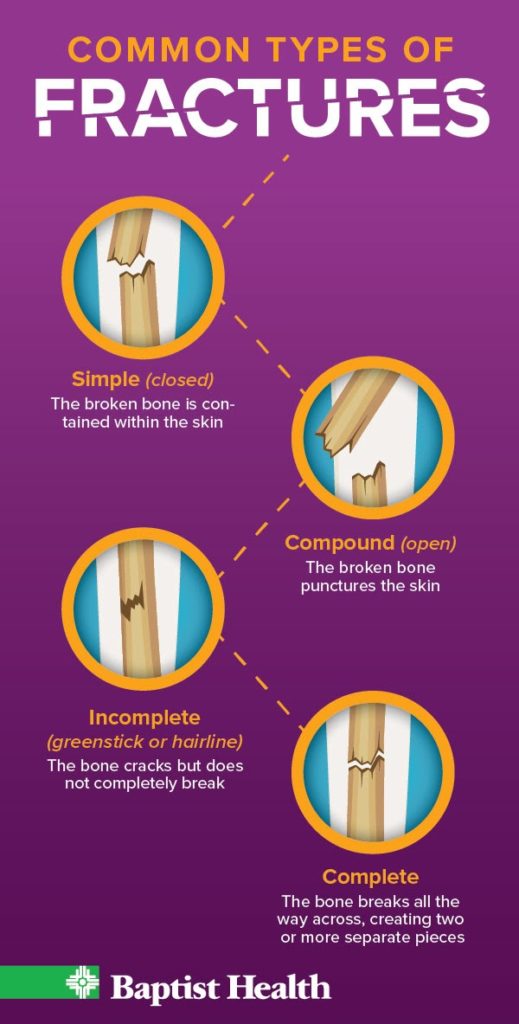The risk of bone fractures and orthopedic trauma significantly increases with age. In fact, more than 90 percent of those hospitalized for hip fractures are over the age of 65. If you or a loved one is older than 65, learn more about geriatric fractures, treatment options and prevention techniques below.
Geriatric Orthopedic Fractures
Symptoms
The signs of a geriatric fracture may involve an obvious injury from an accident or fall, but they can also be indicated by the onset of pain in a concentrated area along with any of the following:
- Difficulty moving the area
- Pain and swelling
- Obvious deformity
- Warmth, bruising or redness
- Inability to put weight on that extremity
Causes
While there are many causes of geriatric fractures, certain factors may cause some people to be more susceptible to fractures than others, including:
- Excessive alcohol use
- Smoking
- A sedentary lifestyle
- Osteoporosis or osteopenia
- Hyper-thyroid and hyper-parathyroid disease
- Kidney failure
- Intestinal issues
- Certain medications, such as long-term medicines used for asthma, high blood pressure, seizures, breast cancer, thyroid conditions, blood thinners, anxiety medications, sleeping pills
- Prior fractures
- Family history of fractures
- Bone diseases such as cancer, Paget’s disease or rheumatoid arthritis
- Movement disorders such as Parkinson’s
- Spine disorders
- History of steroid use
- History of contraceptive use
Genetic factors can also increase the chances of experiencing a geriatric fracture. Generally, caucasian women are at a higher risk than other groups.

Prevention
Though you can’t completely prevent geriatric fractures, you can reduce the risk by:
Exercising
Maintain an easy workout routine to keep bones strong and healthy. For example, try to work your way up to walking 30 minutes at least five times a week. You can also do exercises that improve your balance, such as Tai Chi or yoga, to prevent falls or other injuries.
Taking the Right Supplements
Taking calcium and/ or vitamin D could improve your bone health. Ask your primary care provider if you should be taking these supplements and what your dosage should be.
Maintaining a Safe Home
Walk through your home and identify any trip hazards (such as wires, loose rugs or areas that aren’t lit well) and remedy those problems.
Making Healthy Lifestyle Choices
Avoid smoking and excessive alcohol use. Sleeping medications can also increase your risk of falling and sustaining a geriatric fracture.
Reviewing Your Medications
For seniors, fall risk can increase when taking more than three different medications. New medications or a new dose can also increase the risk of a fall. Discuss your complete medication list with a provider.
Treatment
If you believe you have a geriatric fracture, you’ll need to go to the hospital where providers will stabilize the injury to prevent more damage. Geriatric orthopedic doctors will work with you on managing the pain and making you as comfortable as possible. In some cases, you won’t need surgery. Should surgery be necessary, it will likely occur within a few days of your injury as long as you are healthy enough to undergo a procedure. You may be placed in a splint or cast and will likely need physical therapy to help your injury heal.
At Baptist Health, our Geriatric Fracture Program connects seniors with leading care when they need it most. From immediate pain management to advanced surgical procedures to exceptional rehabilitative services, we help seniors and their families through every step of the recovery process. Learn more about the Baptist Health Geriatric Fracture Program.

